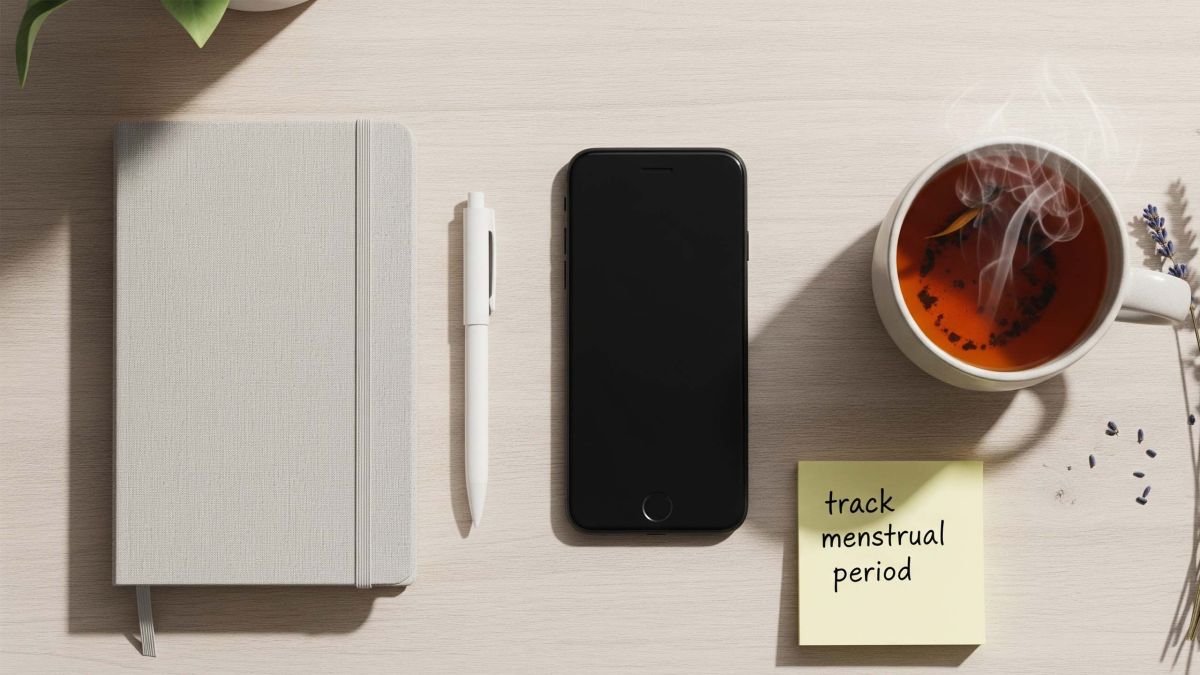Cracking the Cycle Code: A Practical Guide to Tracking Your Period for Better Health

Why Your Cycle Holds More Clues Than You Think
Your menstrual cycle isn’t just about bleeding once a month—it’s a built-in health signal system. Hormones rise and fall in patterns that can influence mood, energy, skin, and even digestion. Understanding those rhythms can help you anticipate what’s coming, make better lifestyle choices, and spot early signs of health issues.
The good news? Tracking your cycle has never been easier. Whether you’re using a classic paper calendar, a sleek app, or simply noting symptoms on your phone, the goal is the same: to connect the dots between your cycle and your well-being.
Step 1: Know Your Cycle’s Building Blocks
A menstrual cycle isn’t just “period week” and “the rest of the month.” It has phases, each with its own role:
-
Menstrual Phase (Day 1-5): Bleeding begins. Hormones are at their lowest, and you might feel like hibernating—and that’s okay.
-
Follicular Phase (Day 1-13): Your body preps for ovulation, estrogen rises, and energy often climbs.
-
Ovulation (Around Day 14): A short but crucial window. This is when you’re most fertile.
-
Luteal Phase (Day 15-28): Progesterone takes the lead, bringing calm—or sometimes PMS symptoms—before the next period.
Tip: Your cycle length is counted from Day 1 of bleeding to the day before your next period starts.
Step 2: Pick Your Tracking Style
There’s no one-size-fits-all method, so choose what fits your lifestyle:
✔ Period Tracking Apps – Great for convenience and predictions. Many apps now include mood, symptom, and temperature logging.
✔ Calendar or Journal – Ideal if you love pen and paper or want to avoid data sharing.
✔ Hybrid Approach – Combine both for accuracy and flexibility.
Pro Tip: Make it a habit by linking tracking to an existing routine, like brushing your teeth or making coffee.
Step 3: Track More Than Just Bleeding
Your period is only one piece of the puzzle. For real insight, note these key details:
-
Cycle Length: How many days from period start to period start?
-
Flow Patterns: Heavy, light, or changing?
-
Symptoms: Mood swings, cramps, bloating, headaches, sleep changes.
-
Basal Body Temperature (BBT): A slight rise can indicate ovulation.
-
Cervical Mucus: Noticing texture and color can help with fertility awareness.
The more consistent your logs, the better your patterns will reveal themselves.
Table: Key Symptoms to Track During Each Phase
| Cycle Phase | Common Symptoms | What to Note |
|---|---|---|
| Menstrual (3-7 days) | Cramps, fatigue, mood changes | Flow heaviness, pain level, energy |
| Follicular (7-10 days) | Higher energy, improved mood | Energy levels, productivity, exercise tolerance |
| Ovulation (1 day (around day 14)) | Clear mucus, possible mild cramps | Cervical mucus, libido, body temperature |
| Luteal (10-14 days) | Bloating, PMS, cravings | Mood shifts, cravings, sleep patterns |
Step 4: Look for Patterns and Clues
After two or three cycles, review your notes:
-
Do you notice mood dips right before your period?
-
Are cramps worse when you skip workouts or certain foods?
-
Is your cycle consistently short or long?
Patterns can highlight opportunities to plan better—like scheduling big presentations during your high-energy follicular phase—or signal when it’s time to talk to a healthcare provider.
Step 5: Use Your Data to Your Advantage
Once you know your rhythm, you can make small tweaks for a smoother month:
-
Nutrition: Add iron-rich foods during your period, and magnesium for PMS relief.
-
Fitness: Low-intensity workouts during your period; strength and cardio during follicular and ovulatory phases.
-
Self-care: Plan downtime before your period to avoid burnout.
When to Check In with a Doctor
Irregular cycles, extremely heavy bleeding, missed periods, or severe pain aren’t things to brush off. Tracking helps you spot these patterns early, so you can bring clear data to your next appointment.
Final Thoughts
Your menstrual cycle isn’t something to dread—it’s a vital sign that deserves attention. With a few minutes of tracking each day, you can unlock insights about your mood, energy, and overall health. It’s not about obsessing over every symptom, but about learning your body’s unique rhythm and working with it, not against it.
Disclaimer: The articles and information provided by the Vagina Institute are for informational and educational purposes only. This content is not intended to be a substitute for professional medical advice, diagnosis, or treatment. Always seek the advice of your physician or another qualified health provider with any questions you may have regarding a medical condition.


 English
English  Deutsch
Deutsch  Español
Español  Français
Français 




